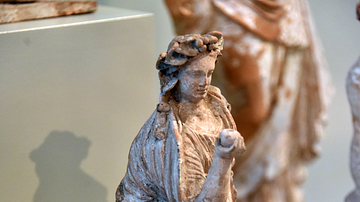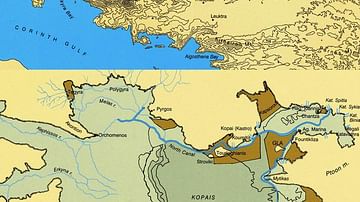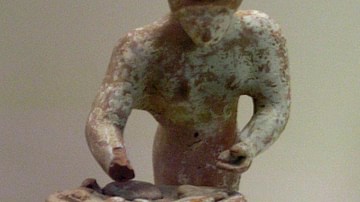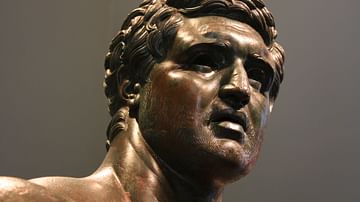Illustration
This small terracotta figurine is part of the so-called "Tanagra Figurines", which represent wealthy middle-class women. These statuettes served as votive and funerary objects, carrying a symbolic meaning connected with the status and role of "middle-class women". In the modern period, these statuettes were misconstrued as simple genre and decorative trinkets and were often forged.
Hellenistic statuettes of girls and women in rich robes are often called "Tanagras" after the most important site where they were found, the country town of Tanagra in Boeotia (in modern-day Greece). Tanagra was, however, just one of many production sites of such figurines; others were located in Athens (in Greece), Tarentum (in Southern Italy), Myrina (in Turkey), and Alexandria (in Egypt). The figures are remarkable for their wide sun hats, jewelry, fans, and lively colors.
325-150 BCE. It is on display at the Altes Museum in Berlin, Germany.
About the Author
Cite This Work
APA Style
Amin, O. S. M. (2019, October 29). Tanagra Figurine. World History Encyclopedia. Retrieved from https://www.worldhistory.org/image/11375/tanagra-figurine/
Chicago Style
Amin, Osama Shukir Muhammed. "Tanagra Figurine." World History Encyclopedia. Last modified October 29, 2019. https://www.worldhistory.org/image/11375/tanagra-figurine/.
MLA Style
Amin, Osama Shukir Muhammed. "Tanagra Figurine." World History Encyclopedia. World History Encyclopedia, 29 Oct 2019. Web. 31 Mar 2025.








